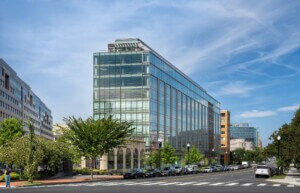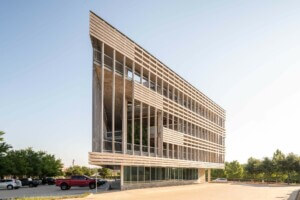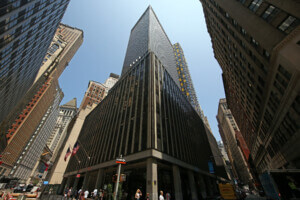New York is coming back to life, and with it, AN’s flagship conference! For the first time in more than a year, professionals will gather in person at Facades+ NYC on August 5th. In partnership with CetraRuddy Architecture, this popular conference brings the most relevant projects and expertise into real-time dialogues with the AEC community and speakers from around the globe. Attendees also will be able to pick from three carefully curated tracks of technical workshops which take place virtually the next day. Join us for a deep dive with our co-chair John Cetra, founding principal of the award-winning New York-based firm CetraRuddy, to hear about how the two-day hybrid event will play out and Cetra’s hopes for the future of architecture in a post-COVID design world.
AN: What about CetraRuddy’s architectural intent and design methodologies align with Facades+?
John Cetra: You know, I’d like to say that we’re problem solvers, but we’re also problem finders. We’re looking for the problems so we can help solve them if they haven’t been solved already. This is a great opportunity, I love going to these kinds of events, especially Facades+, which is so focused on the skin of the building and how and how we approach the design of that skin. Whether an idea comes to me while in the midst of listening to somebody talk or much later on… I get it and I remember something about what I heard, or what I thought. It’s really just a perfect opportunity to kind of step back and take another look at everything. Because I think that really fits into our methodology and the way that we work.
What do you think the audience will get out of attending Facades+?
We started talking about this before COVID and the world was changing already. We were very concerned about sustainability, climate change, rising sea levels, asking “how does that affect our environment and our buildings?” So a lot of the conversations that we formulated for the event are all focused on that area: Passive House design, how is that changing? How are we reducing the carbon footprint in better ways and what does that mean for us as designers? How can we do that, how does every incremental step kind of feed into that system? So I’m looking forward to those kinds of conversations. Also, you know, talking about rising sea levels, New York City has, I think it’s over 800 miles of coastline. When you look at it from that perspective, you see that we have to really be concerned about how we’re designing buildings and how rising sea levels are going to impact our buildings and our design. So [we’ll] hear about how people are approaching it, what kinds of new regulations are being put into effect, new zoning and building codes, and environmental codes, and there’ll be an opportunity for all of us to talk about that. So all of this is focus of being able to look at these things with people who are the top professionals in our field, who are going to be speaking about this is just I mean, it’s incredible.
What do you think the AEC community should be thinking about in regards to how NYC is evolving right now?
Well, the other thing that has become something much more discussed, but we’ve always been involved with it in our practice, is what to do with buildings that have that are no longer needed—that were built for a specific purpose and now are either obsolete or have become obsolete because we no longer work that way, we no longer live that way. Whenever we no longer shop the way that we used to shop! So all of that, and that’s just not a New York City phenomenon. But it’s happening all over. The issue about New York is that we have a great building stock of older buildings that need to be repurposed. Part of that repurposing also will result in improving their sustainability and their energy consumption, and so on and so forth through the redesign of their skins. Especially in New York, we’ve been converting loft buildings and warehouse buildings to residential uses now for almost 50 years. A lot of those buildings that were converted earlier were of the earlier era: they could have been buildings, actually from the 19th century, or they could have been early 20th century. Now, we’re talking about buildings that were post-1955 or 1960. Those New York buildings were usually large, very large office buildings that were facing extinction. And of course, now everybody’s questioning whether or not we need all this office space now that people are working differently. We think that COVID has accelerated the idea of remote working and not having to always be in the office. So that’s going to definitely have an impact. So we’ll have to be looking at office buildings, especially those from the “Europe post-1962” era and try to figure out how to make them work because they’re very, very different from the loft building conversions that we did earlier.
What is your hope for the future of architecture?
You know, I think we’re all at a stage here. We’re just coming out of COVID which is really great. Hopefully, this trend that we’re on now is going to continue but you know, before we even started we were thinking “how are we going to do things better?” How are we going to design better buildings, how are we going to create buildings where there’s more of a sense of the outside, how do you create spaces where buildings have more complex facades that kind of disappears at times, how do you bring more of the natural environment into buildings? You know, trying to break down that barrier to create more opportunity for view, for light, for air! In our buildings, and doing it also in advance, it’s got to be a cost-effective way. We are, as architects, mostly working with tight budgets these days. Construction costs have gone even higher right now. So finding out how to do this effectively is the most is most important. And this is what this symposium is all about, really.











